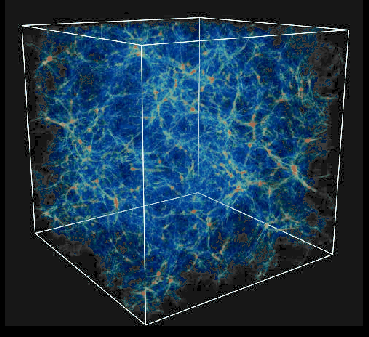A computer simulation depicting a large chunk of our universe
G. L. Bryan, M. L. Norman, UIUC, NCSA, GC3
Related links:
A Matter of Scale - interactive showing the sizes of things, from very tiny to huge - from NSF
The Cosmos
Cosmology is the study of the whole universe. Just what is the Universe? Well, it is everything that exists. However, from Earth we cannot see everything in the Universe. Some things are dark (brown dwarf stars, planets, and Dark Matter) and we cannot see them. And because light travels at a set speed we actually
look back in time when we look into the cosmos.
Astronomers see some neat structure in the Current Universe. That structure can tell us much about the History of the Universe. It can also tell us what we can expect for the Future of the Universe and beyond...
You might also be interested in:
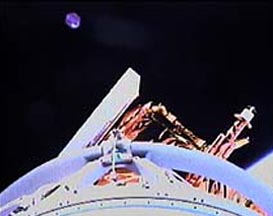
NASA launched a new satellite called the Far Ultraviolet Spectroscopic Explorer (FUSE). It will help scientists study the Big Bang by looking at light coming from objects far away. This will allow scientists
...more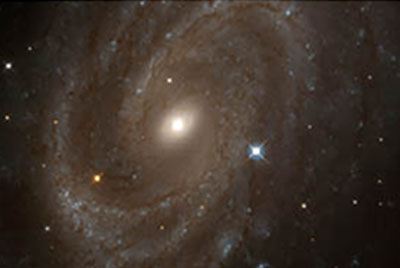
Scientists have found the real Hubble Constant after 8 years of research. The Hubble Constant is the rate that the Universe is expanding at. They found it to be 70 kilometers per second per megaparsec.
...more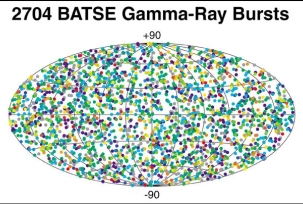
Satellites in the 1960's looked for a type of light called Gamma Rays. They found bursts of Gamma Rays coming from outer space! They can't hurt you. They are stopped by the Earth's atmosphere. We have
...more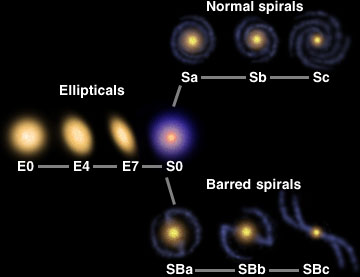
When we look up at the night sky, we notice that there are many stars in our sky. Stars must like to live together in star cities - galaxies. Our city of stars is called the Milky Way, and it is home to
...more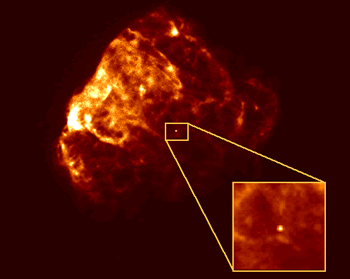
Neutron Stars form when really big stars die. When such a star runs out of fuel its center begins to collapse under gravity. When the center collapses the entire star collapses. The surface of the star
...more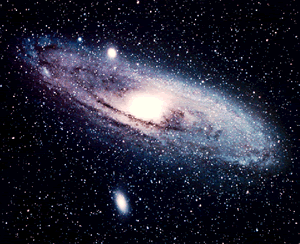
Spiral galaxies may remind you of a pinwheel that blows in the breeze. Like a pinwheel, a spiral galaxy is rotating, and it has spiral arms. Through a telescope or binoculars,a spiral galaxy may look
...more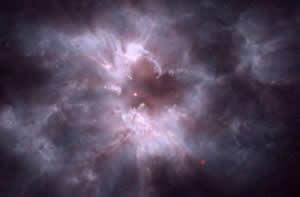
When stars like our own sun die they will become White Dwarfs. As a star like our sun is running out of fuel in its center it grows into a red giant. This will happen to our sun in 5 Billion years. The
...more
